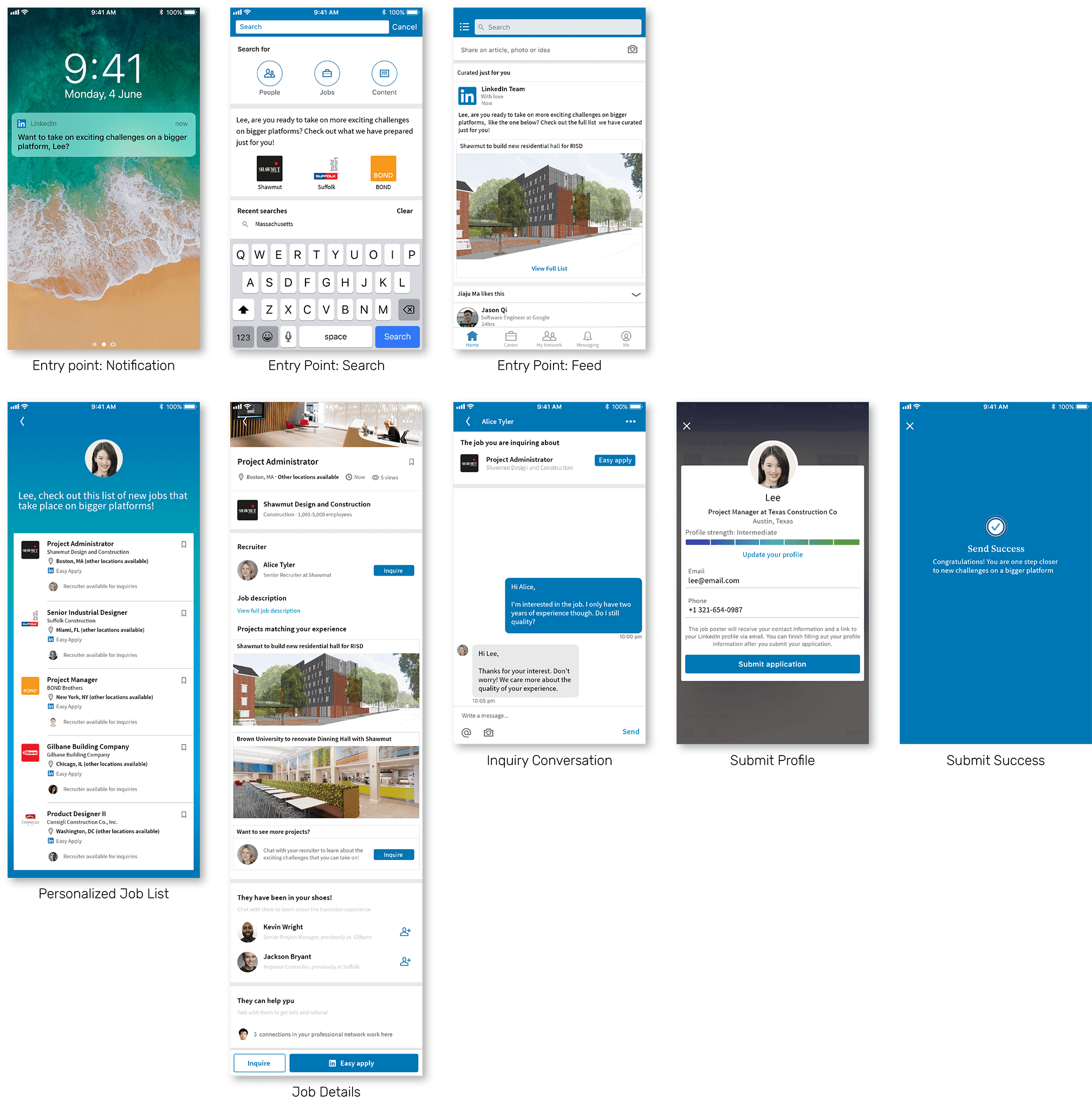LinkedIn Design Challenge
Mobile app experience design
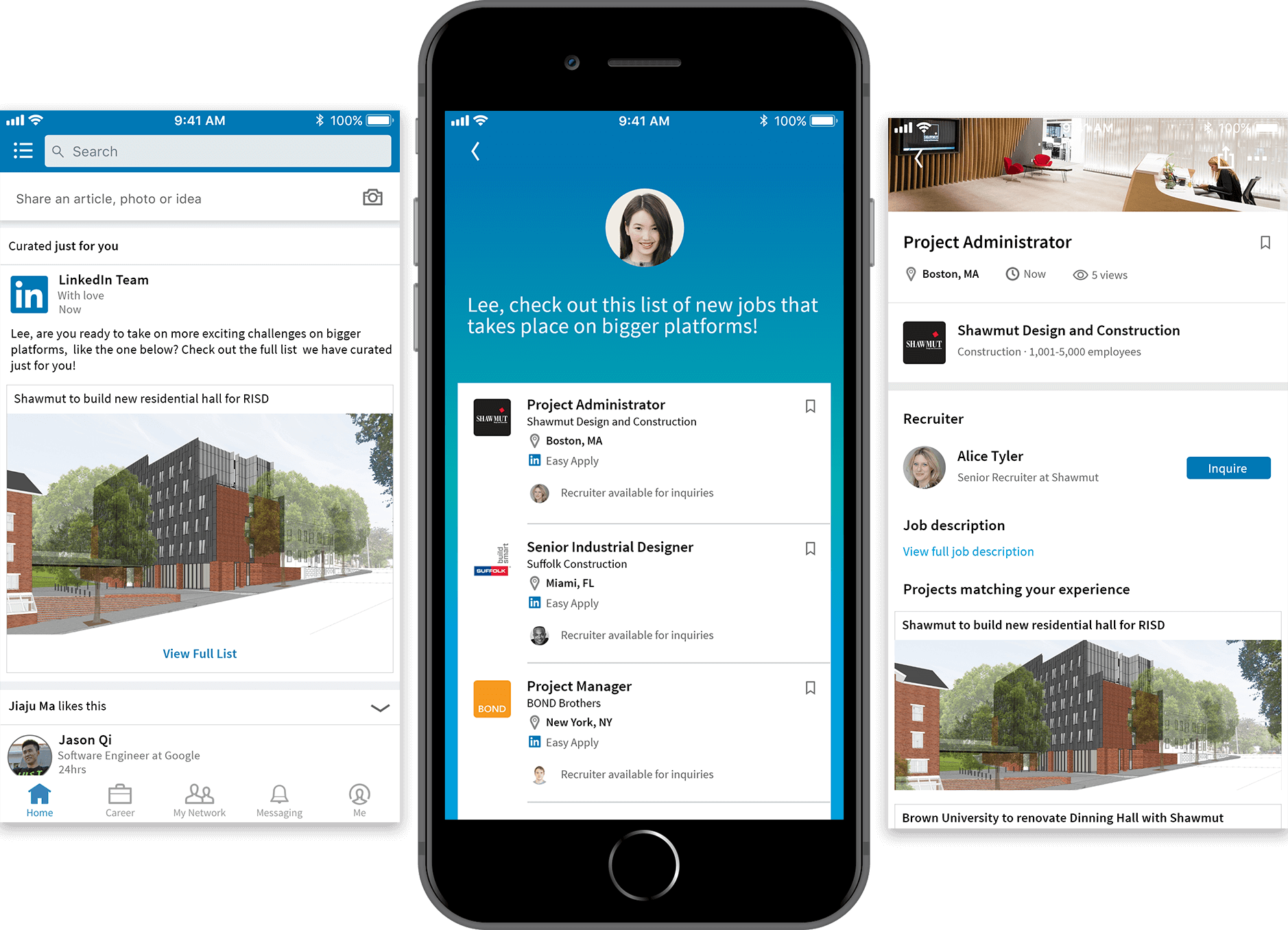

LinkedIn is a network of over 550 million professionals. We use the power of professional networking and profile data to connect individuals with relevant opportunities. Hiring managers and recruiters are frequently interested in people who are already employed or satisfied with their current positions.
Task: Design an experience that presents job opportunities to a passive candidate, who is not actively looking for a new position. Find creative solutions that gains the passive candidate's interest in a new position, and garners a response.
UX Designer
October 2018 (7 days)
Adobe XD, Illustrator, After Effects

I began by breaking down the prompt and asking some initial questions:
Who are passive candidates?
Why do people become passive candidates?
What would make passive candidates want a new job?
Why would passive candidates use LinkedIn?
I then listed some potential answers to my questions, and how solving each questoin can contribute to my design.

Based on my initial questions, I designed a 6-question online survey. I received a total of 161 complete responses. 70% of the respondents are not actively looking for new jobs, although they have on average a satisfication score of 3.3. These people fall nicely into the category of "passive candidates", and their responses provided me with some significant insights. Below are the results of my survey.
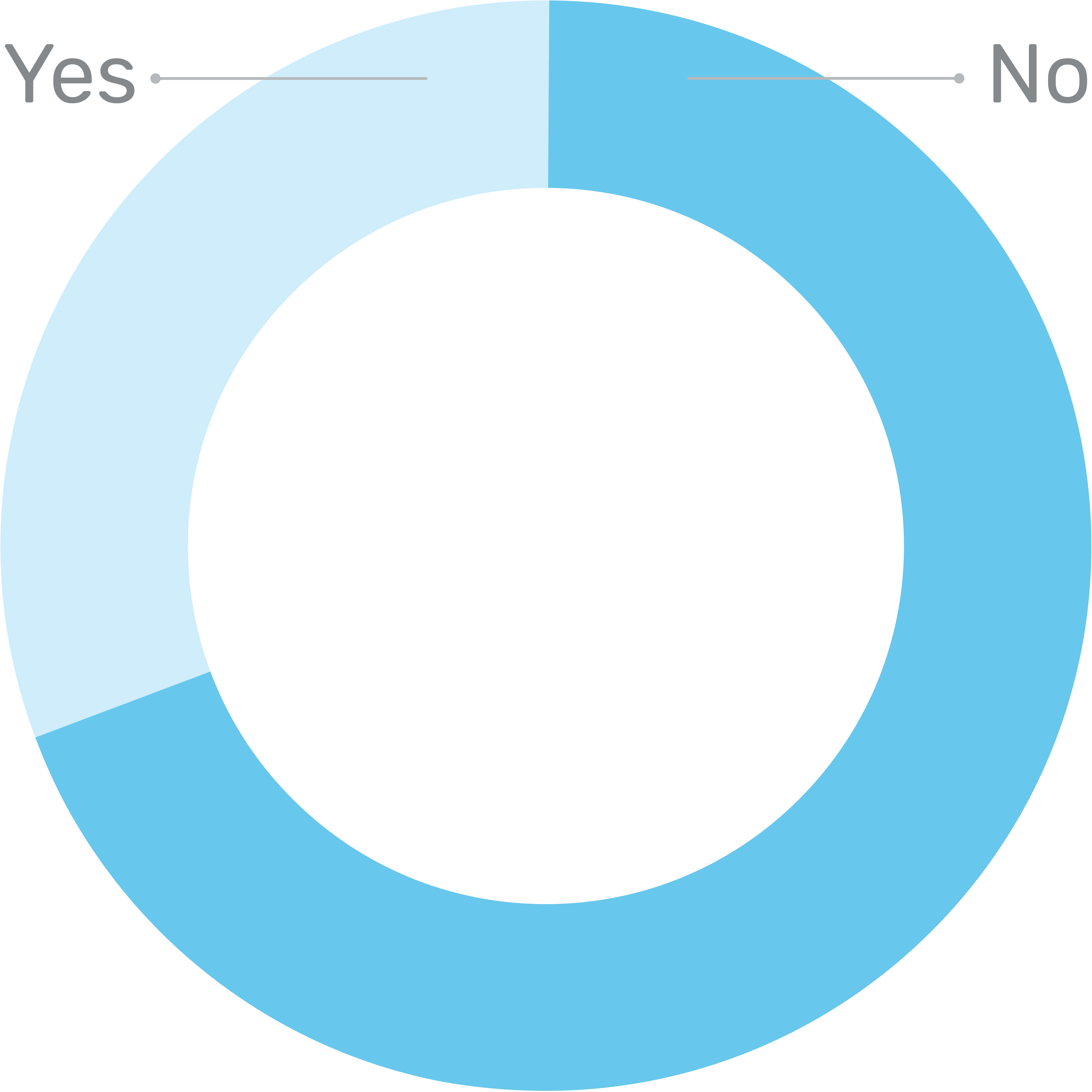
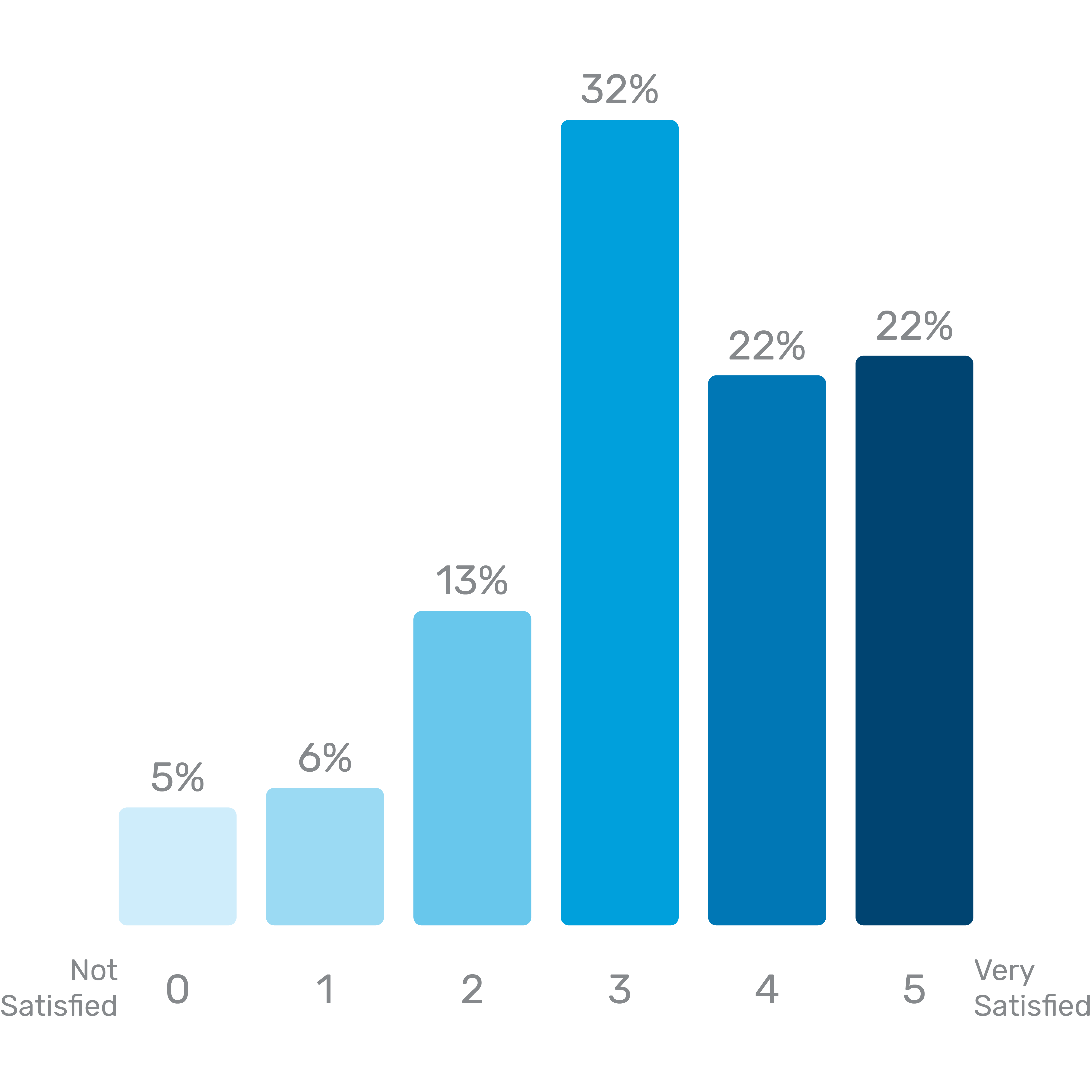
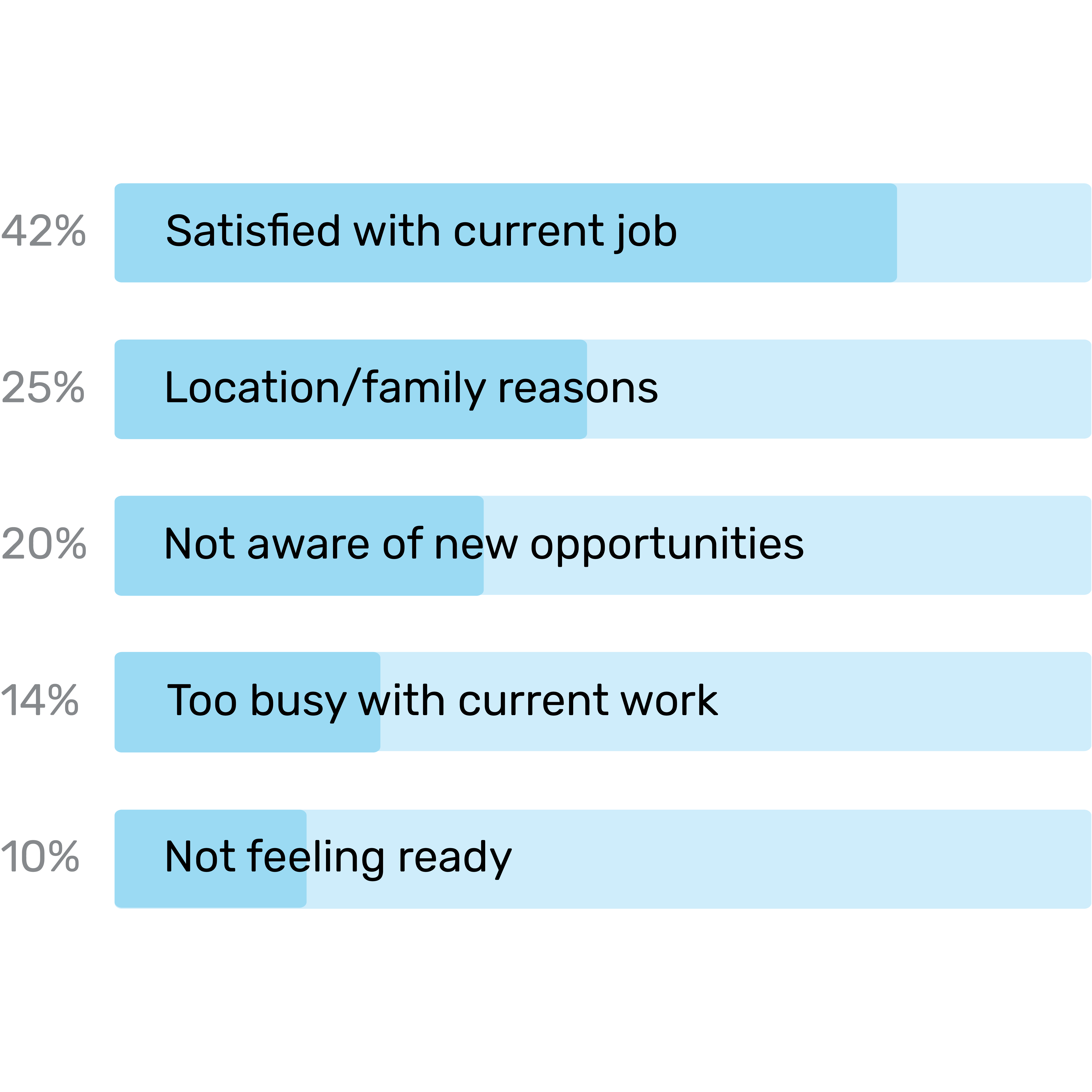
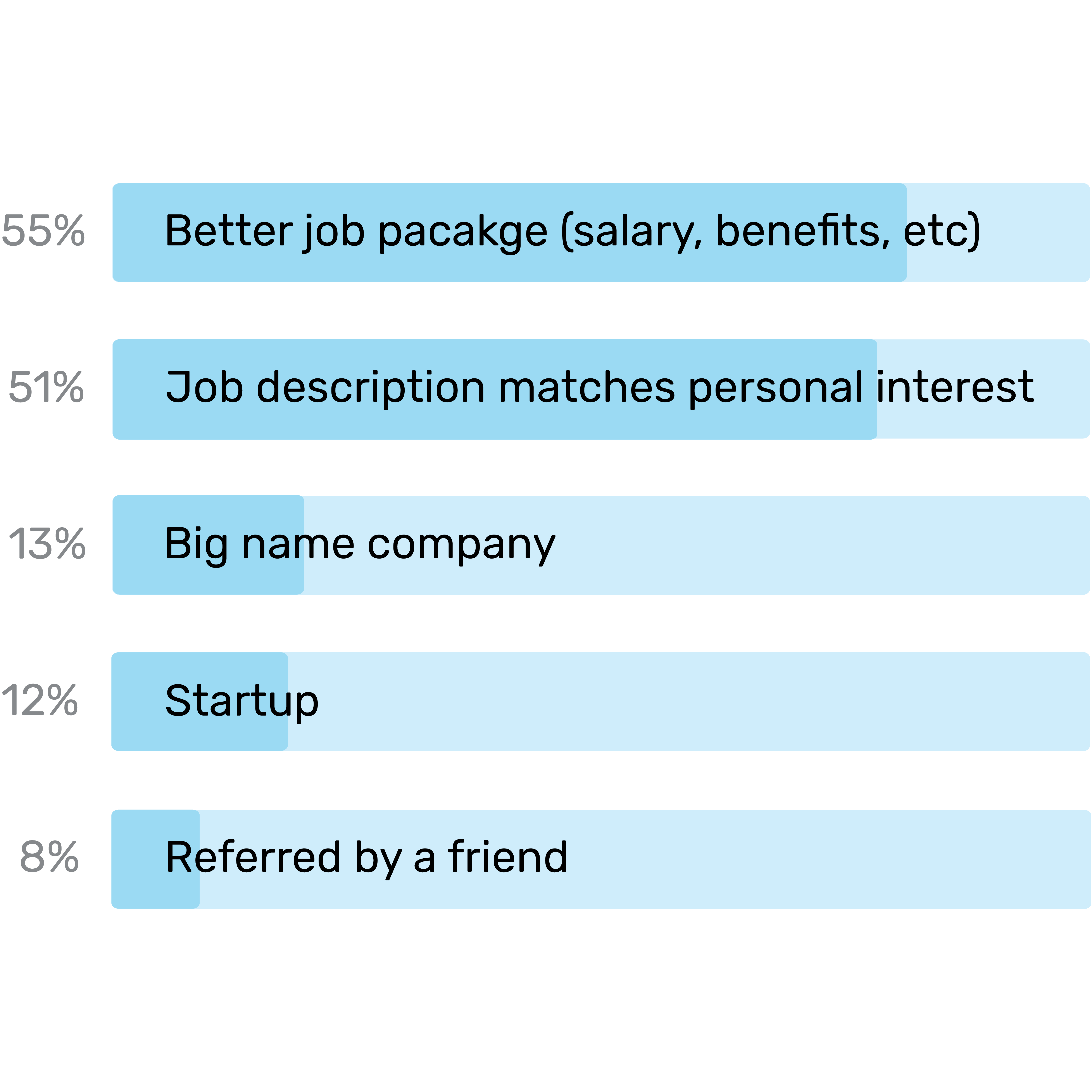
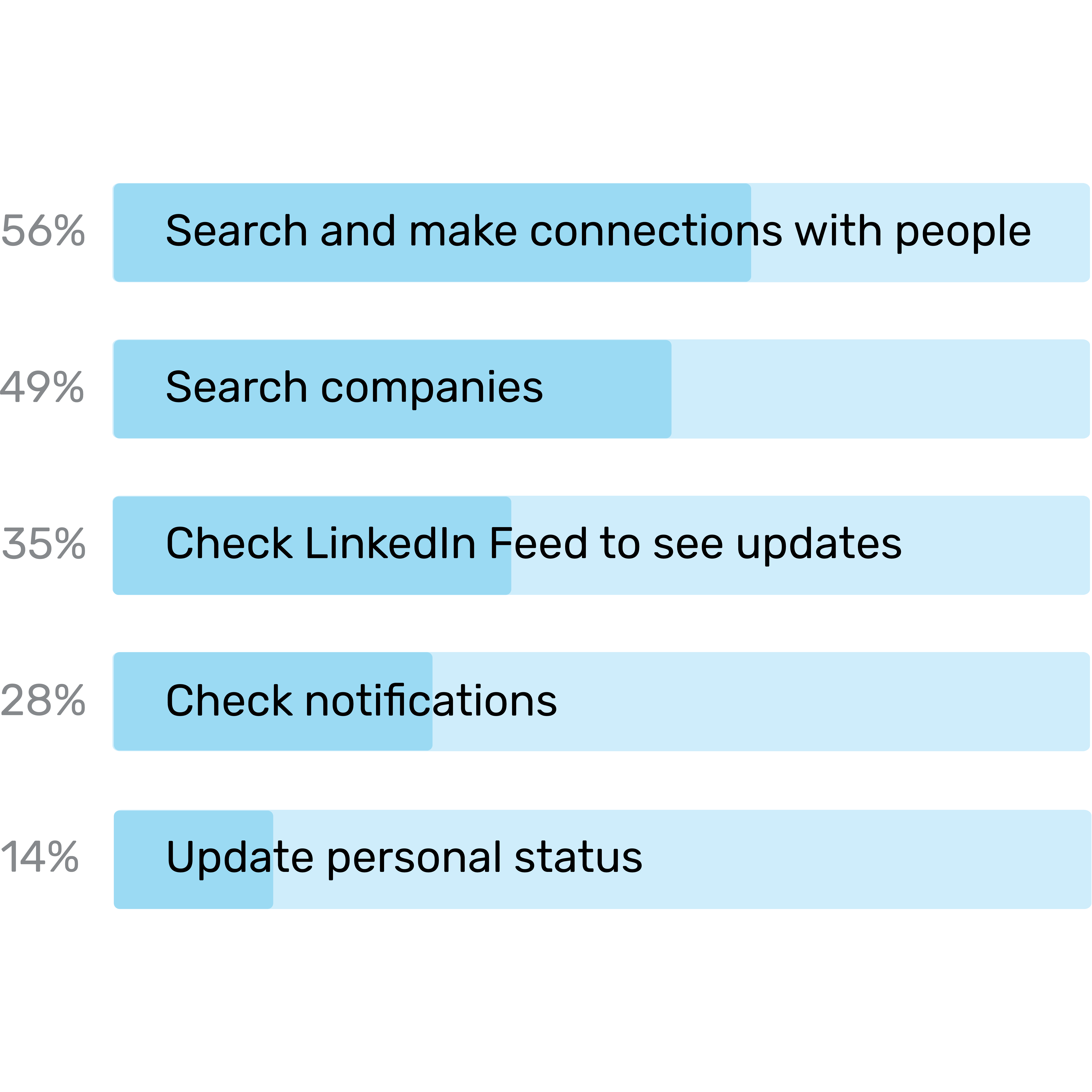
Of the 70% respondents that are not actively looking for new jobs, I asked them what their activities are on LinkedIn, so I can have a better understanding of passive candidates' behaviors.
Having the survey results in my mind, I conducted 4 in-depth interviews with professionals in various industries in order to obtain some information that I might have missed in the survey. The interviewees range from having never changed jobs to changing up to 8 times throughout their careers. They have some overlapping answers, which are strong signals that the information is significant. But each person also has his or her own unique concerns. Below are some highlights of what they said.
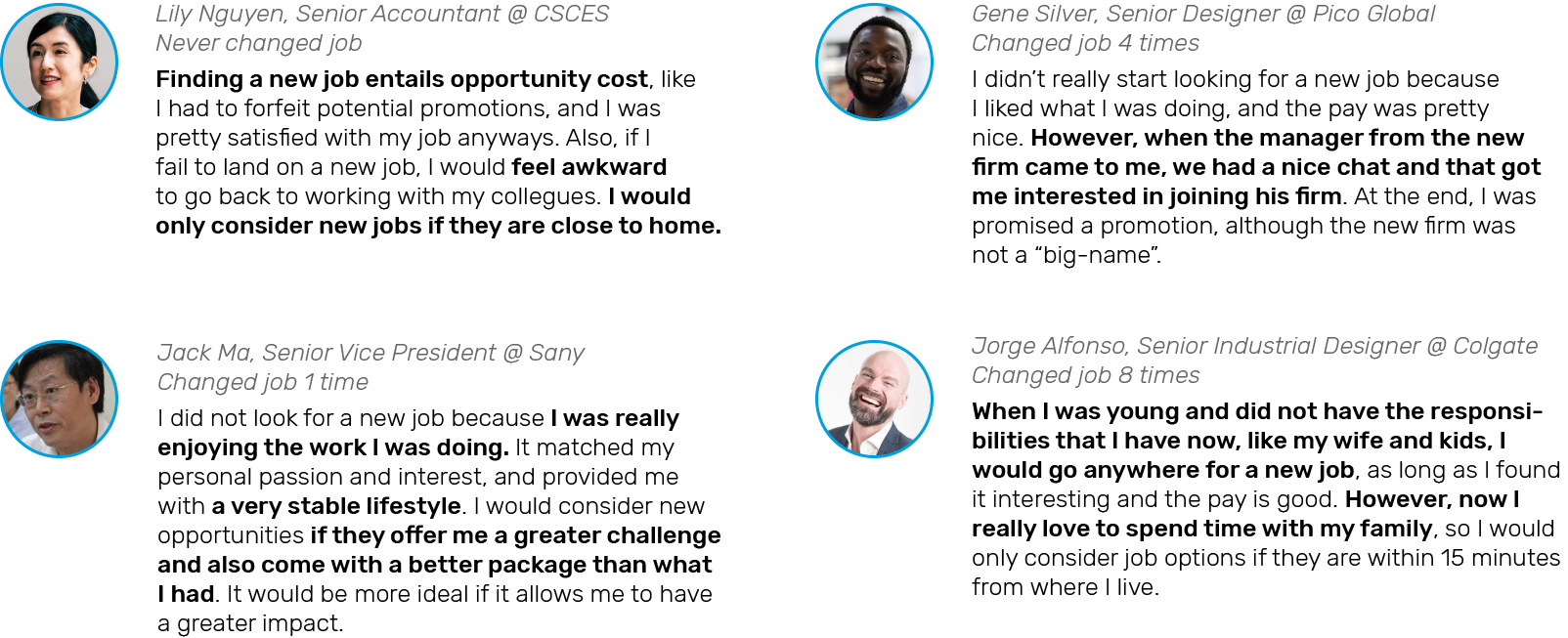
Based on my survey and interview results, I drew an affinity diagram to summarize and visualize the important discoveries. I broke down the causations to passiveness to three main categories: Subjective (personal concerns), Objective (uncontrollable factors), and External (concerns due to other people, like family). The goal of my design is to gain passive candidates' interest, which entails aiding candidates with two aspects: Personal Development, and Core Needs.
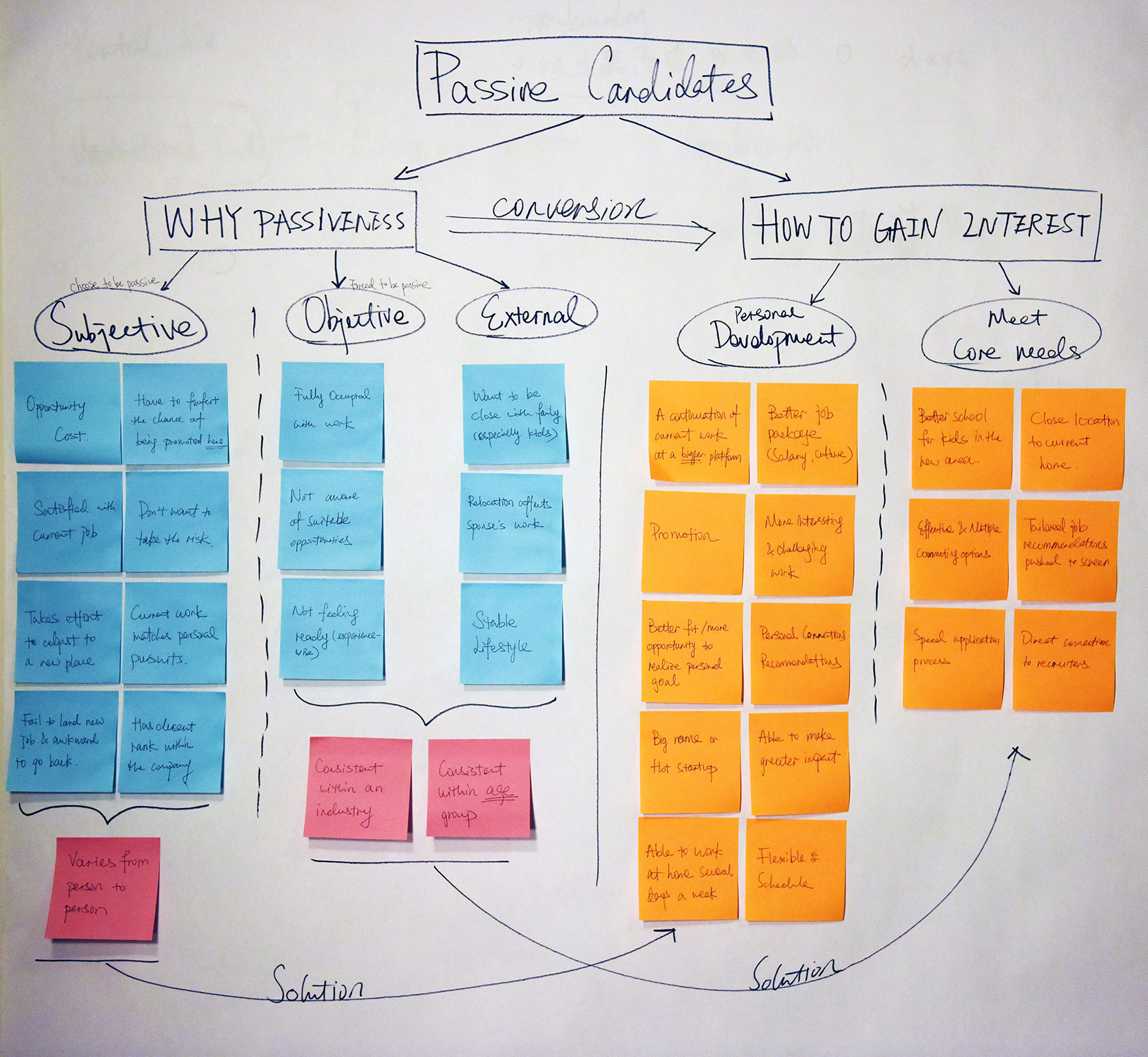
Who are passive candidates?
Passive Candidates ≠ People who don’t want new jobs
75% of the workforce are passive candidates
Qualified candidates but less likely to interview with multiple companies
Prefer direct contact with recruiters
Why do candidates become passive?
Top subjective reasons: satisfaction with job, and work matching personal interest.
Top objective reasons: geographical location and family
63% of candidates want to know office locations
What would make passive candidates want a new job?
Need to identify the reasons they become passive and present them with solutions.
If people are passive because of Subject reasons, we should help them with personal development.
If people are passive because of Objective reasons, we should address their core needs.
Age also plays an important role in creating passiveness: as people form families, they have bigger responsbilities and often prefer stability.
Thus, reasons for passiveness varies from person to person, but are also dynamic for the same person. It is important to have personalized job posting experience for every passive user.
In order to illustrate how my design emphasizes on personalization, I created two personas. They are in different stages of their lives, and become passive for different reasons. Michael is passive because of his wife and kids, and thus we need to address his need of being close to family. Lee is passive because she is too busy with work and does not think she is ready, so we need to react accordingly.
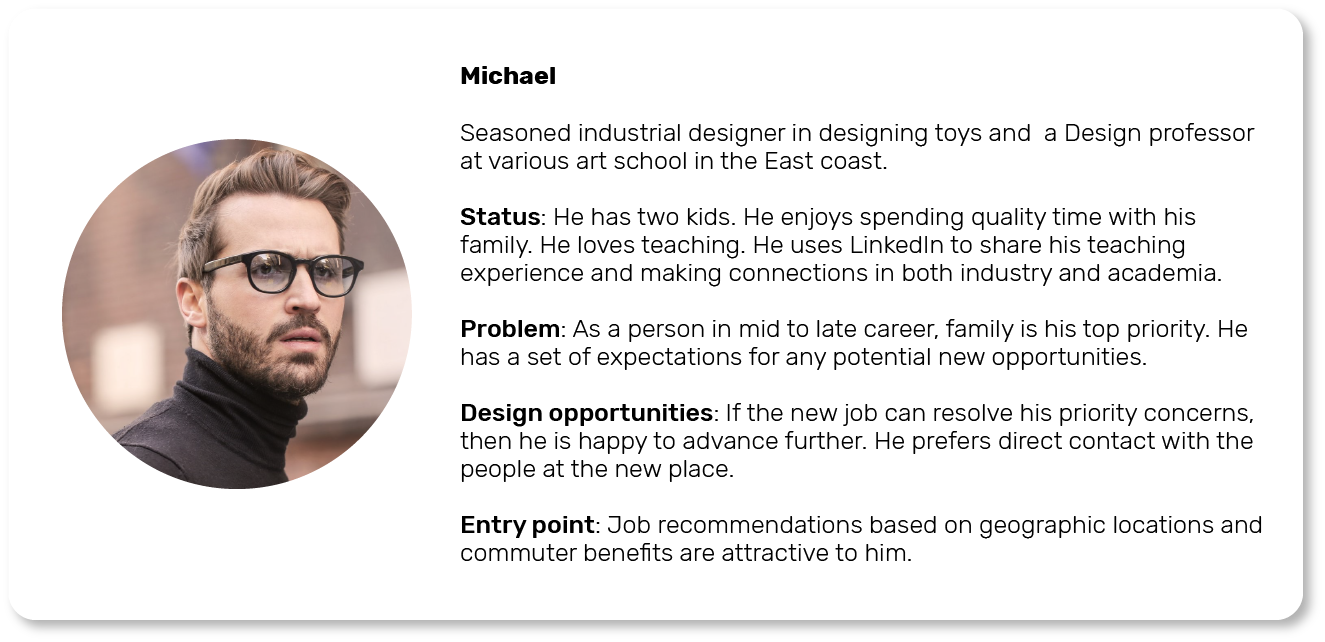
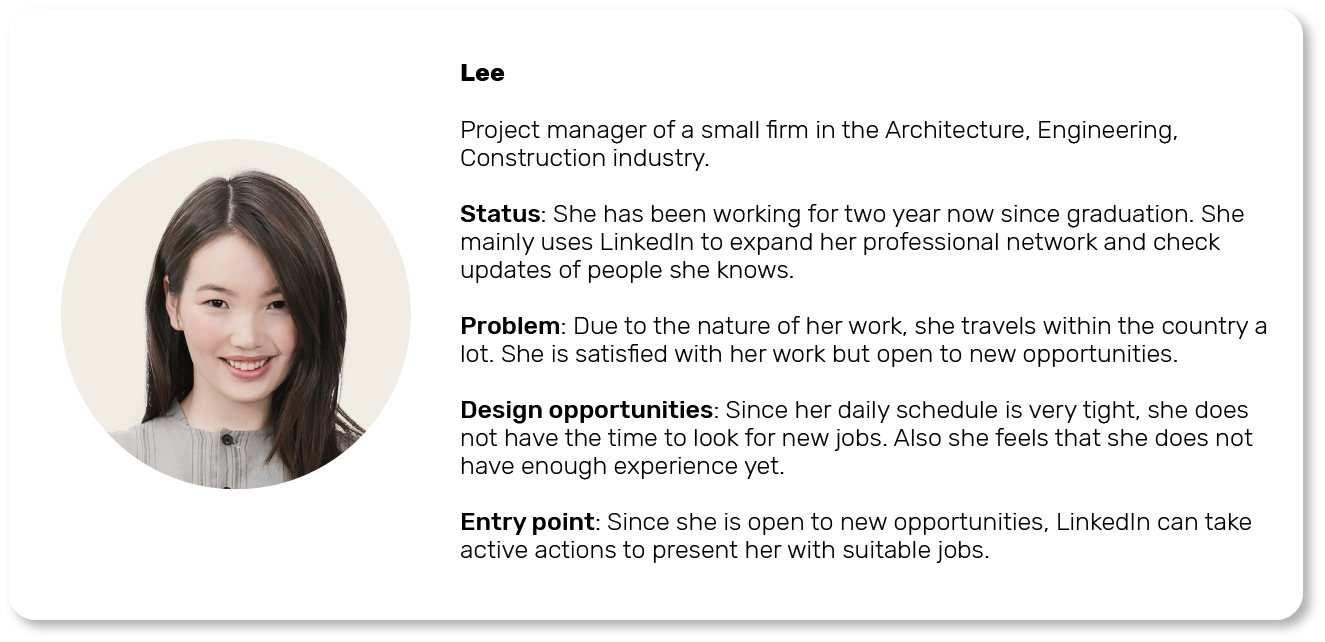
Getting Michael and Lee's attentions is a crucial first step to gather why they become passive and what their concerns are. Therefore, I initially designed three different entry points for them to see the persoanlized job recommendations list, based on top activities of passive users on LinkedIn. Their reactions to each entry point is collected by the Job Posting Personalization Engine, which can generate more accurate personalized jobs based on their responses (the acutal implementatin of such engine is handled by LinkedIn's Machine Learning engineers. However, my design provides a means to collect data for such engine).
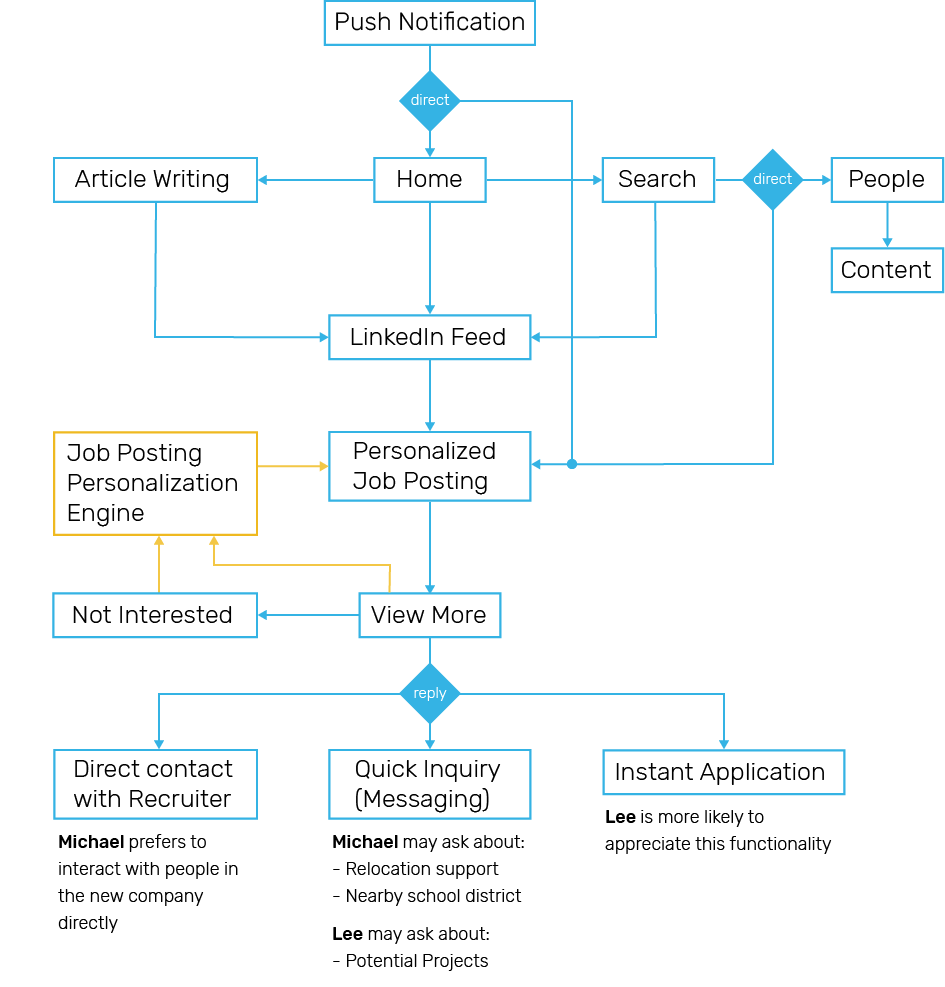
Initial wireframe sketches were mainly focused on Michael's persona.
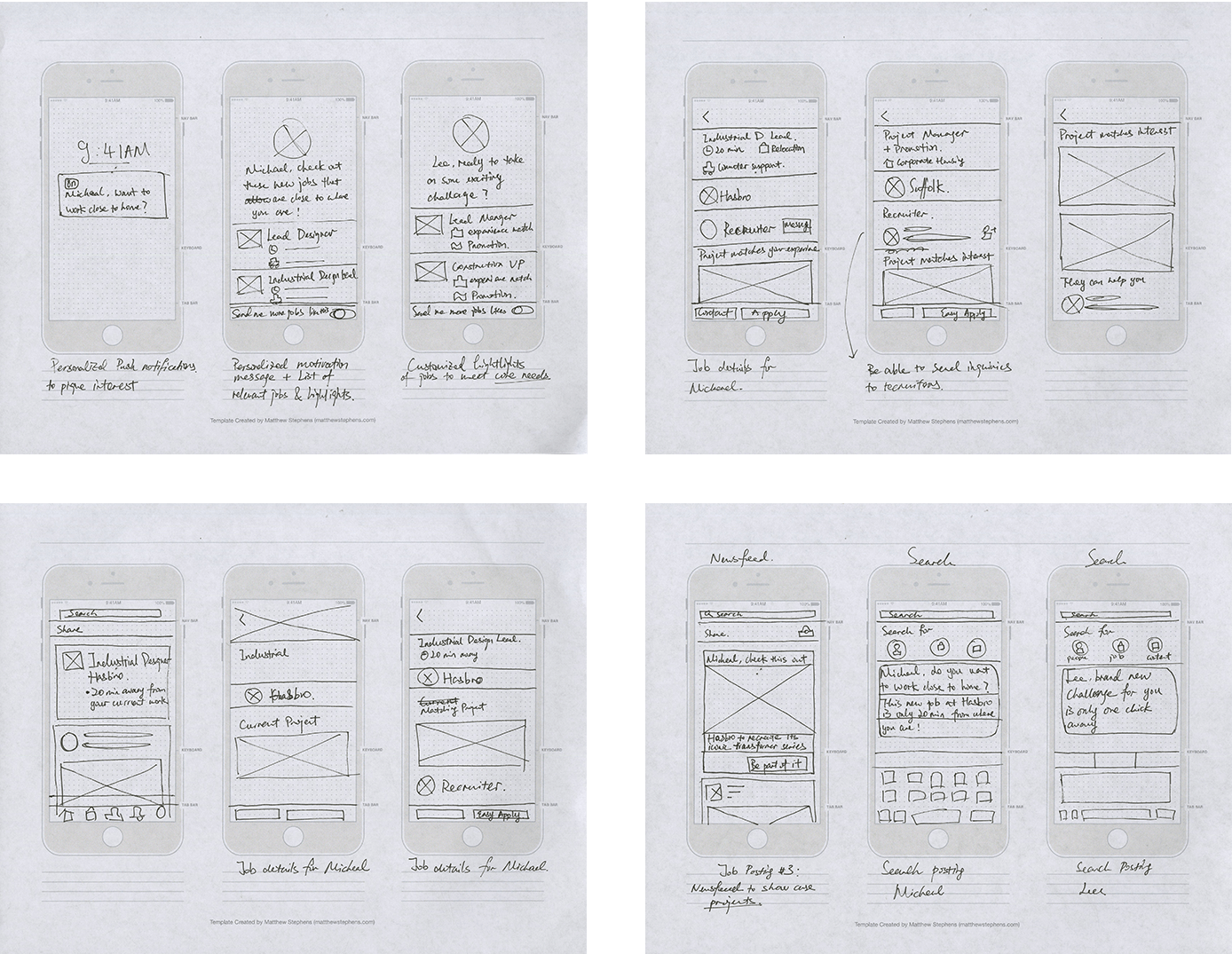
Based on initial wireframes, I created the first paper protype. It has a simplified process than that drawn in the user flow diagram, having only one entry point. I also adpated LinkedIn's existing Easy Apply feature.
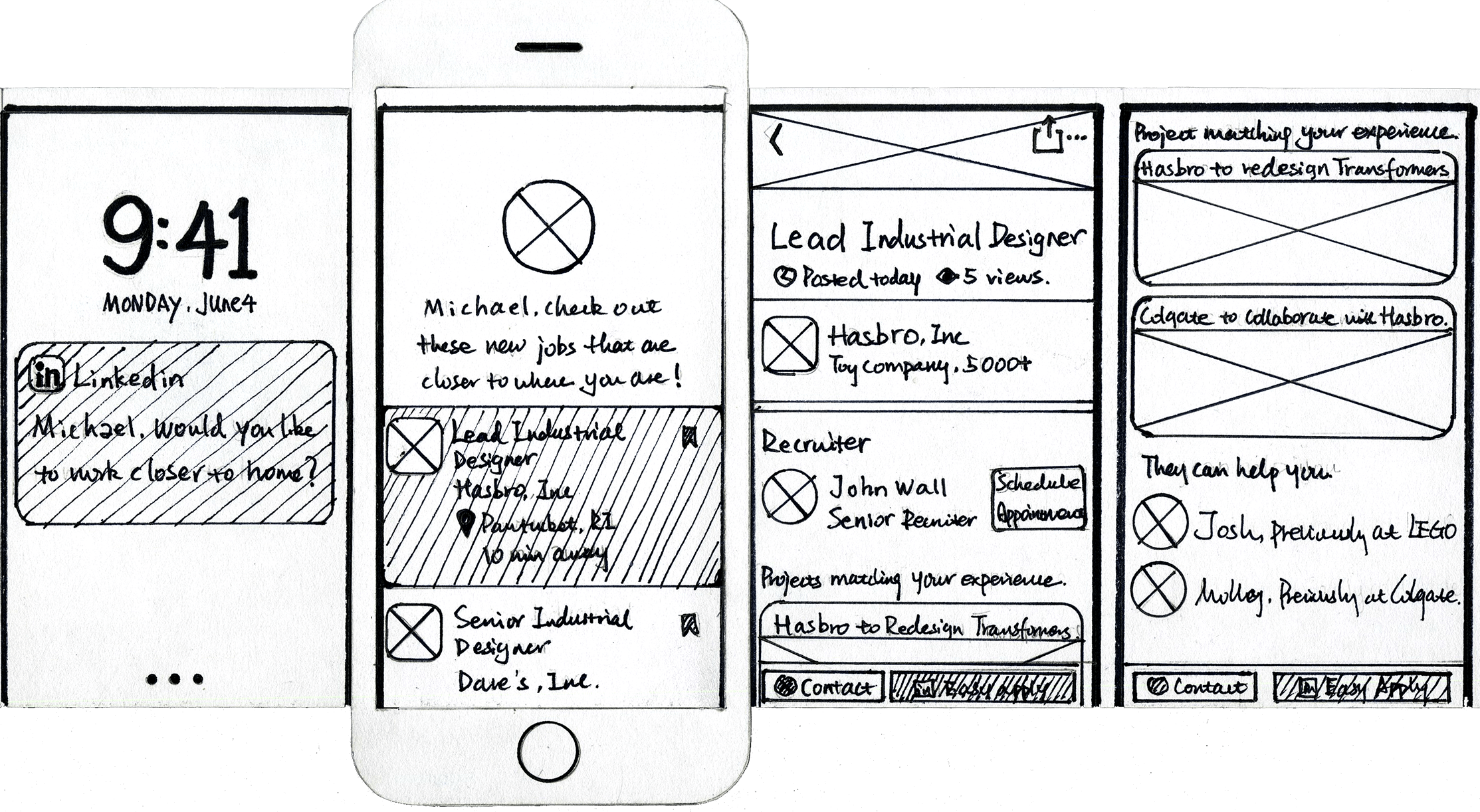
I asked Gene Silver, one of the interviewees, to test my first paper prototype. I narrated Michael's persona to him, and asked him whether the protype was effective in piquing his interest and address his concerns. Gene said the protype was effective, especially the section in the Job Detail page where he can see possible projects that he can work on, but he also gave some advice. Push notifications are a weak point in that they can be easily disabled. Also, Gene felt that having a means to communicate with recruiters before actually applying can be very helpful.
Based on Gene's response and my findings so far, I did a second paper prototype, with three different entry points, and the option to chat with recruiters instantly.
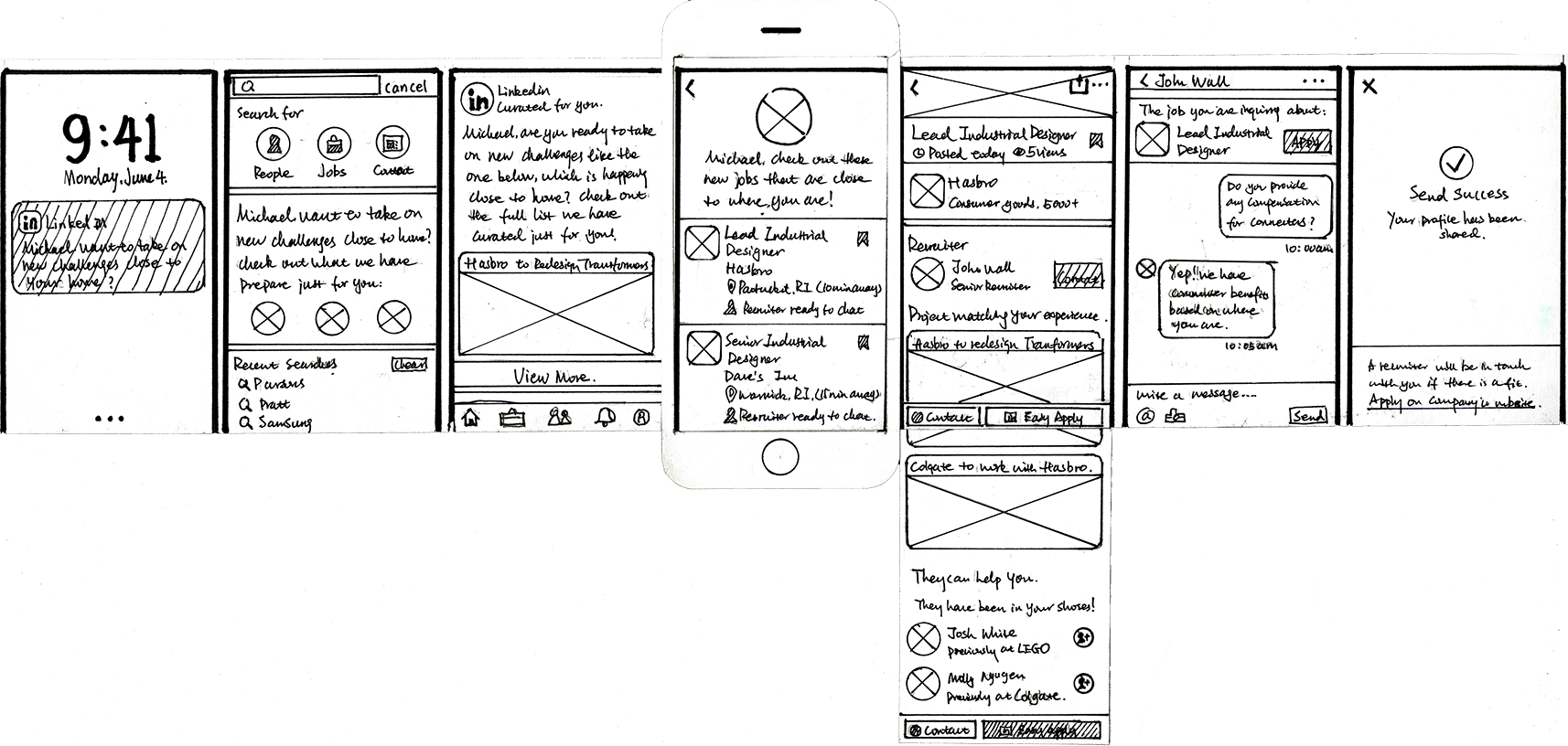
This is the intermediate step I took when converting paper prototypes to final deliverables.
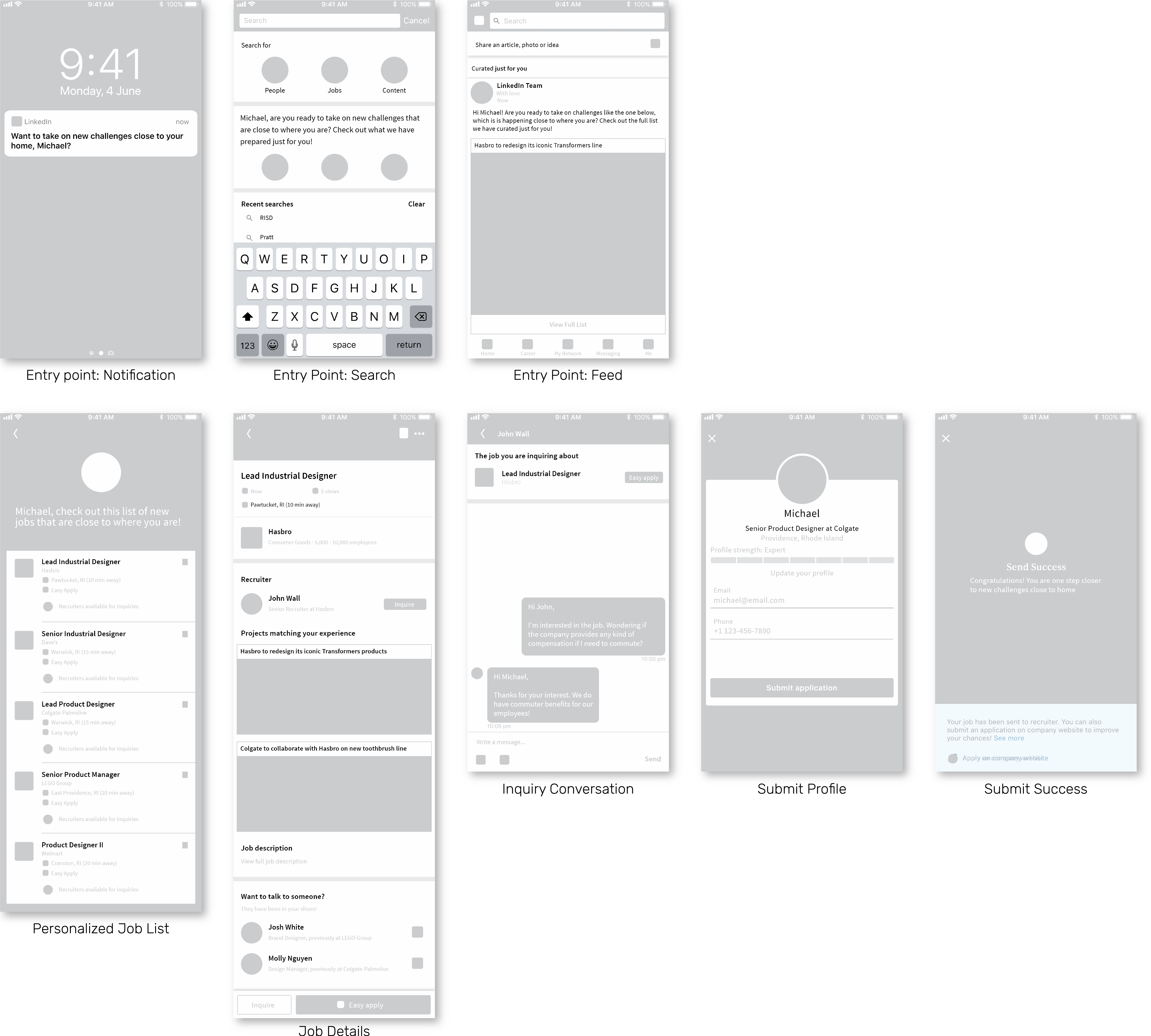
As I have stated above, it is crucial to gather why the candidates become passive. My solution is to present the user with various messages, companies, and projects that may meet their concerns or match their interest at entry points. The Job Posting Recommendation Engine will record their responses to these postings. If they see a posting and disregard it, this means that the content of posting is probably irrelevant. If the positing has successfully catches their attention (i.e. they clicked into it), this then means that the content is probably highly related to the state of their minds. Collecting such information will help LinkedIn's Machine Learning engineers to improve existing recommendation algorithms. Therefore, in my design, not only the candidates' response to recruiters are important, their reactions to the postings themselves are also valued. Below is designed based on Michael's persona. Based on the user's beahavior, only one or two entry points will be kept.
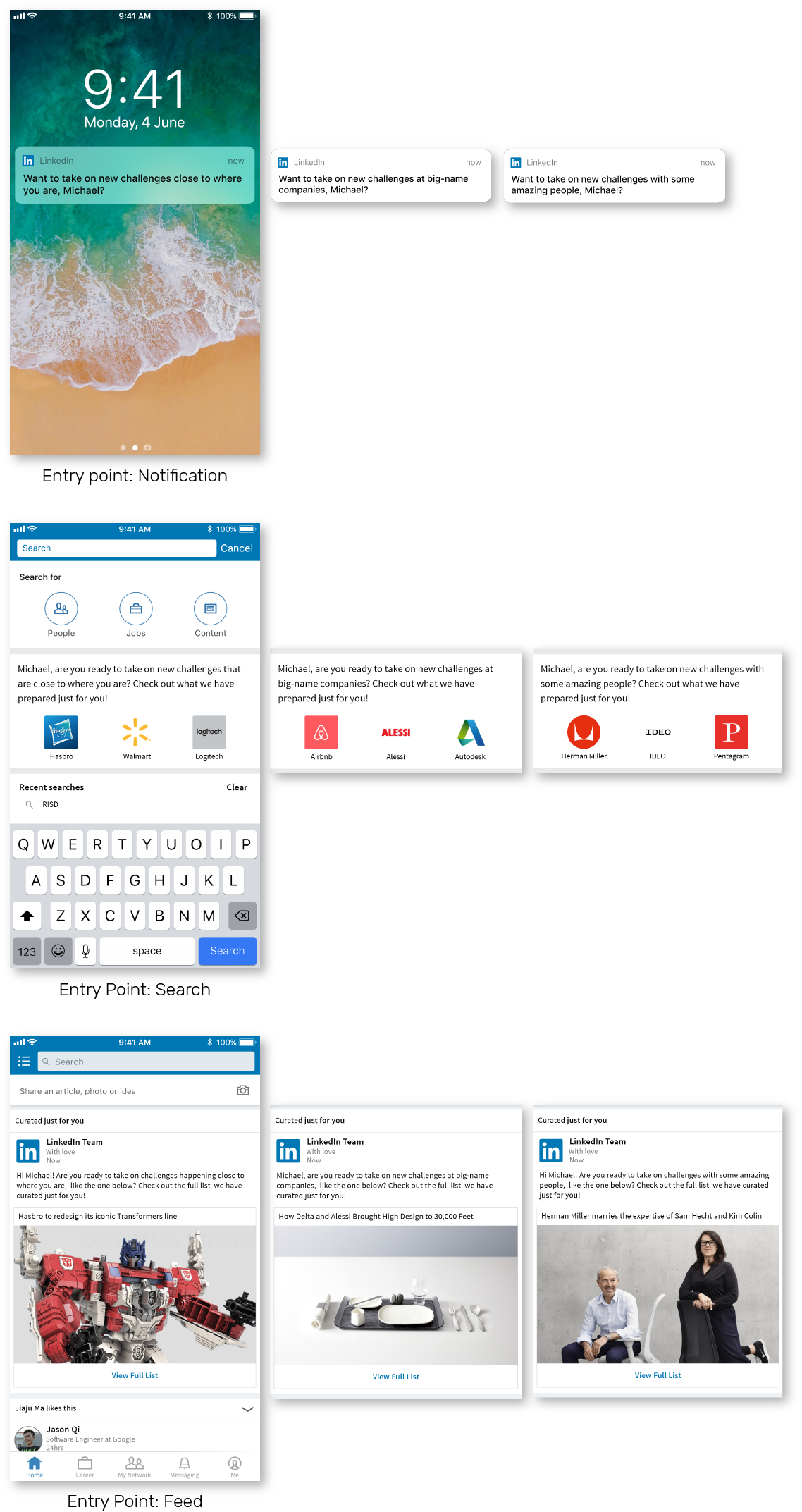
For Michael, his primary concern is family, and thus he only consideres jobs close to home. Also, since he is a seasoned toy designer, jobs that involve designing toys catch his attention. His quick conversation with the recruiter convinced him that daily commuting is not a disadvantage to him.
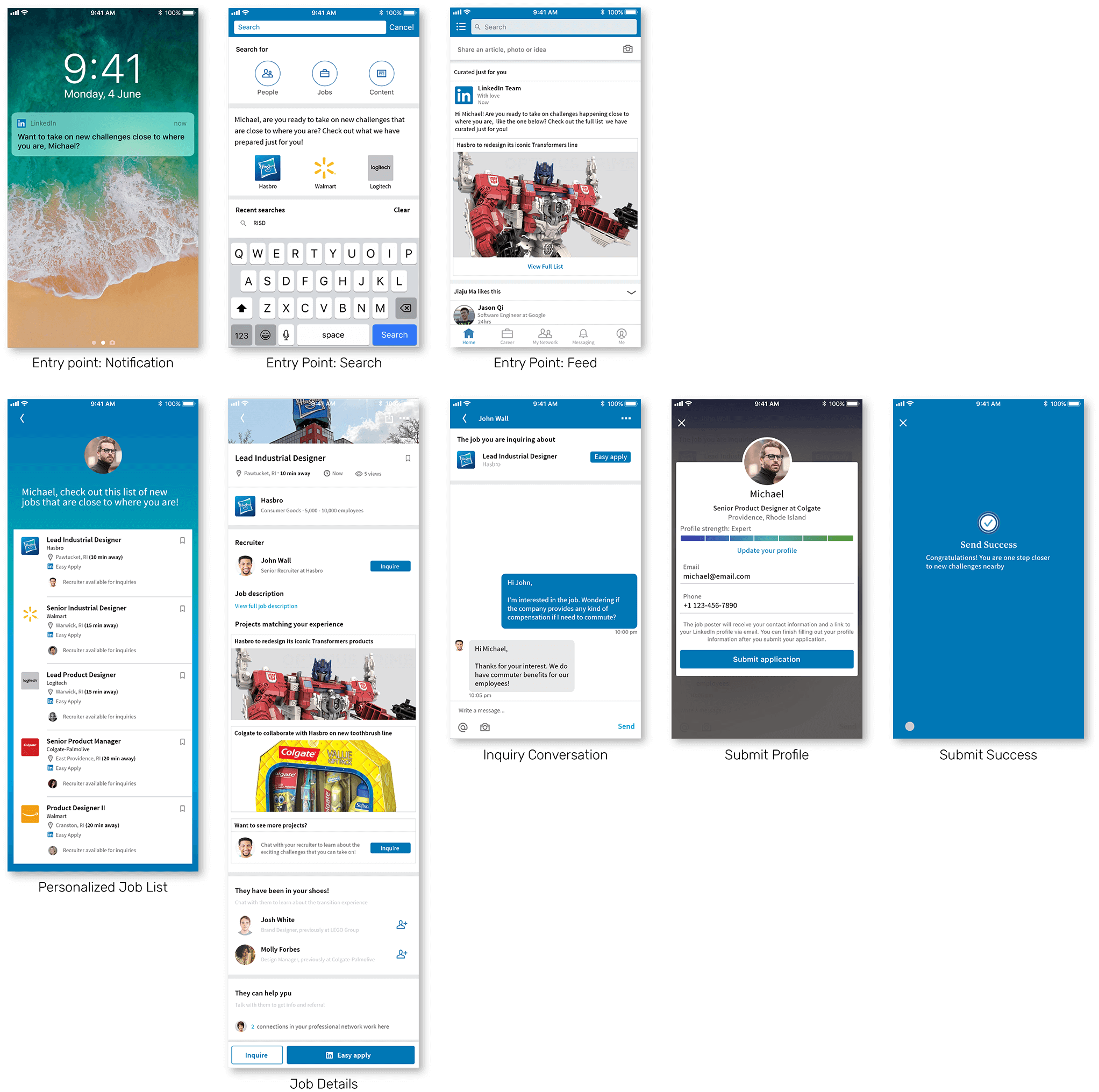
Lee is too busy with work to look for new jobs, but a curated personalized job list saves her a lot of time. Also, a quick chat with the recruiter gives her confidence in applying, as she is not sure whether she has enough experience.
